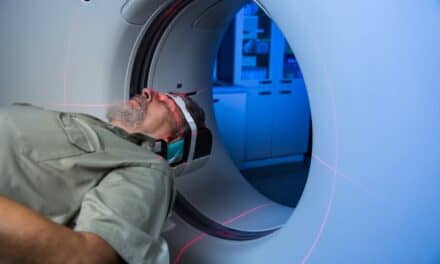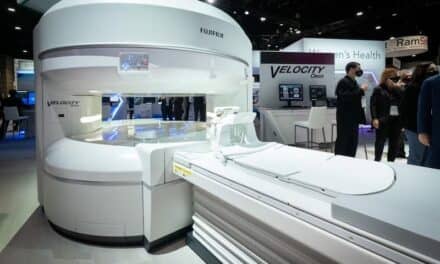By Sanjay Govil
Wearable technologies and analytics to dominate medical sector in 2017
Current developments indicate that the healthcare industry will see a significant shift in 2017 toward an all-out embrace of technology, characterized by dramatic growth in wearables, predictive analytics, electronic health records (EHRs), and gamification.
Driving this push is the healthcare marketplace itself: According to recent estimates, premium costs under the Affordable Care Act, or ObamaCare, will increase by 22% in 2017, although the Trump administration may challenge this legislation. Even so, the projected rise is expected to set in motion trends that will necessitate a more dramatic technological change across healthcare that will manage costs for healthcare providers and patients.
One trend, for example, is a discernible growth in the adoption of remote care by both payers and providers—a more cost-effective option from the traditional, time-consuming, in-person healthcare model. 2017 is, therefore, expected to see an unprecedented surge in remote patient meetings, diagnoses, remote medical prescriptions, and billing.
The other trend to take hold in 2017, I believe, is the increased use of technology to drive patient-driven healthcare, where patients will have the tools and technologies to maintain a healthy lifestyle and manage care from their homes. These practices will play a leading role in gradually improving patient outcomes, which payers and providers will then bank on to help manage premium costs in the future.
Wearing Your Health
Part of the patient-driven healthcare trend will be supported by the dramatic growth and adoption of wearables. Currently available as fitness trackers in the form of watch-like devices, the market for healthcare wearable devices will grow exponentially—to increase in number, variety, and function—which will add to the data available to manage patient health.
There are a few new additions to the wearable markets, as well. For instance, “tech fabrics” in pants or sweaters, when worn, will record body movements and vital function measurements. Another innovation is technology-enabled footwear, which measures heart rate, blood pressure, and blood sugar levels when users are in motion or sedentary.
Part of the benefit is how, when combined, these healthcare devices across their various forms and functions will engineer a steady and substantial shift toward a more self-reliant model of healthcare. This new model enables prevention and maintenance of one’s wellbeing, rather than having to rely solely on treatment—thereby helping to drastically cut down on repeated hospitalizations and its accompanying costs.
The other benefit is the influx of available data that can help clinicians build more complete profiles of patients, enabling them to detect any potential issues earlier. What’s more, the transition reiterates the shift in the industry from a pay-for-service to an outcome-based model that will bring about a bigger role for analytics in the industry.
From Prediction to Prescription
Alongside the growth of data is the ability to process those numbers. For instance, I’m seeing the growth of technology that analyzes data from wearables and other remote devices, and I believe that analytics will grow in scope to enable patient-specific prescriptions. This will mark a definite move from the more passive role it has played so far—deriving patterns from stacks of data and measurements—to a more active form by way of predictive recommendations and prescriptions, when required. These analytics are based on months—or years—of scrutinizing data and patterns in patients.
The rise of analytics will also allow payers to derive more personalized care for the two categories of patients that healthcare companies tend to focus on most: those who are at high risk and those with chronic conditions who highly utilize medical care and coverage. Not only will prescriptive analytics enable providers to act quickly to prevent an emergency, it will also help them prescribe what is medically required when patients from either of the two “high-risk” categories face a medical crisis.
Interestingly, for the first time, the emergence and growth of prescriptive analysis will also bring about a focus on a segment of patients usually considered irrelevant to healthcare plans: the “healthy and unknown.” This will occur as concerns around the projected spike in healthcare plans will make payers and providers conscious about the need to keep a closer tab on a segment routinely overlooked as low-risk. Their interest will be to ensure that the already high projected costs of both healthcare and plan premiums in 2017, and beyond, are not further stretched by the possible entry of the currently healthy into high-risk categories.
Seamless Access to Patient Health Records
Supporting the previous two trends is the dominance of both EHRs and electronic medical records (EMRs), which have already been rapidly growing across providers. Although fueled mainly by a federal mandate that requires physicians to adopt certified EHR/EMR systems and demonstrate “meaningful use” by 2015, electronic health systems will become a mainstay of the healthcare industry. After all, the rise of wearables and analytics are also propelling their utilization.
As greater amounts of data are generated, the need for having it all securely recorded in one place will automatically necessitate EHRs. Patients, too, will recognize its usefulness in having instant access to all their previous doctor’s appointments, specialist visits, prescriptions, and test results. This simplifies the sharing of medical records across providers without bureaucratic hassles or time lags.
The advantage of such an arrangement will be made more pronounced by the provisions of Obamacare, which make it mandatory for payers to cover all patients, regardless of their preexisting health conditions. EHRs will help payers get a quick and up-to-date picture of a patient’s health profile to make quicker assessments, while also enabling patients to keep track of their own health, risk factors, and medications.
Other Major Trends
Lastly, gamification will also emerge as a key trend in 2017, which symbolizes the fusion of wearables, predictive analytics, and EHRs by offering players technology to make staying fit fun. This can appear in the form of mobile apps, such as “Map My Run” or “Map My Bike,” which can spur a user to achieve daily or weekly targets, or measure their productivity against their peers. Further, gamification encourages engagement and motivates users to achieve his or her individualized goals.
But, most of all, 2017 will see a recognition among healthcare players of the urgent need to invest in making healthcare systems more integrated. Players across the board will acknowledge that real change in patient outcomes and future reduction of spiraling healthcare costs can only come about when every piece of the evolving patient-centric healthcare system is in sync with the other. Communication of medical data across all tiers must be seamless, transparent, and trustworthy.
Sanjay Govil is the founder and chairman of Infinite Computer Solutions.




